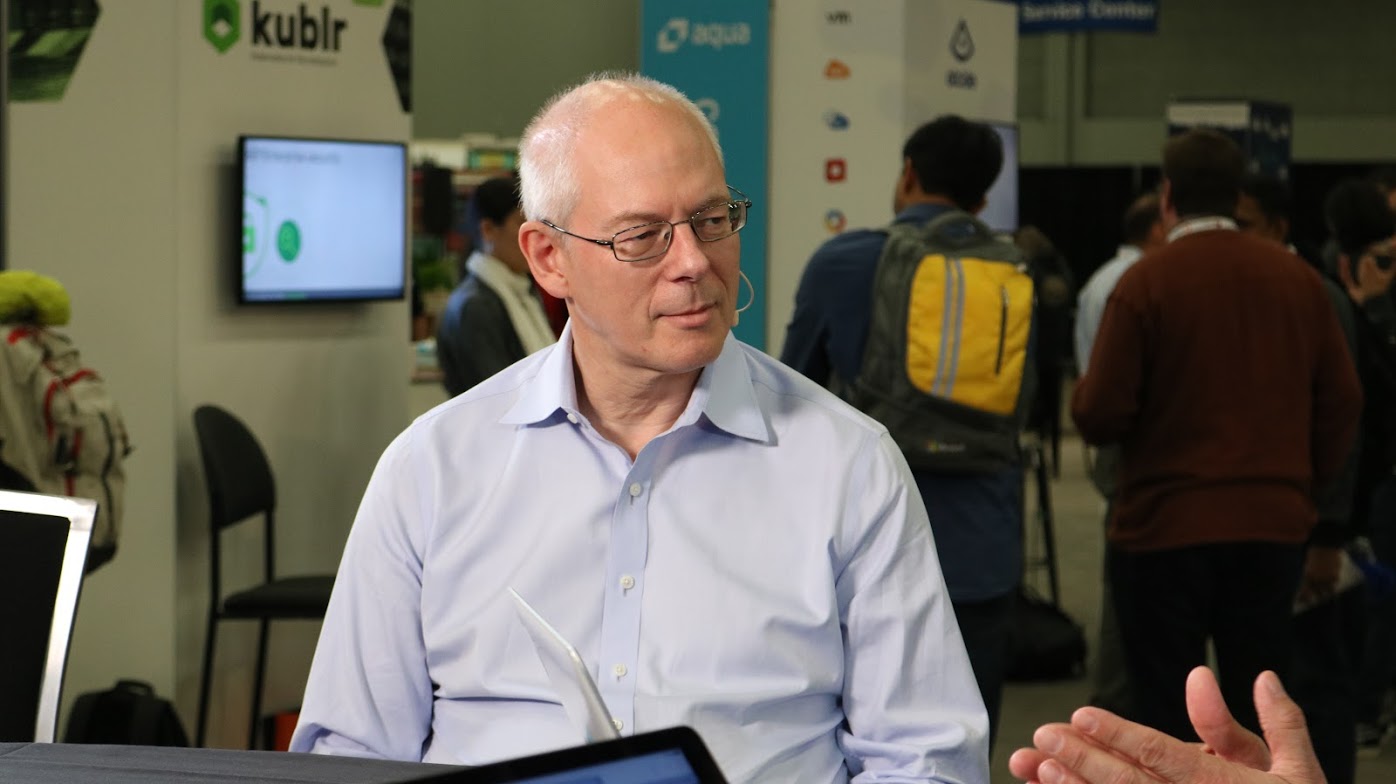 CLOUD
CLOUD
 CLOUD
CLOUD
 CLOUD
CLOUD
Amazon Web Services Inc.’s kaleidoscope of cloud offerings keep morphing, merging and meshing into new delivery models. The juggernaut just threw EC2 Bare Metal instances into the pot along with virtual machines, serverless functions and containers — a virtualized method for running distributed applications. And just announced Fargate enables users to mix different instances with containers on top without having to manage servers or clusters.
“The granularity of cloud is now getting to be extremely fine grain,” said Adrian Cockcroft (pictured), vice president of cloud architecture strategy at AWS. Picking out the right granules for a particular slice of its customer base is AWS’ obsession, he added.
Those customers are increasingly directing AWS to go deeper into open-source technology communities. This culminated in the company joining the Cloud Native Computing Foundation last August and its recent announcement of Elastic Container Service for Kubernetes (called Amazon EKS). Kubernetes — the popular open-source container orchestration management platform — also figures in the design of Fargate.
Cockcroft spoke with John Furrier (@furrier) and Stu Miniman (@stu), co-hosts of theCUBE, SiliconANGLE Media’s mobile livestreaming studio, during the KubeCon + CloudNativeCon event in Austin, Texas. (* Disclosure below.)
In Fargate, containers are a first-class entity that users deploy to. “So it’s: ‘Here’s my container registry, point you at it, and run one of these for me,'” Cockcroft said. Users need not think about the underlying machines or operating system. Containers allow instances to be smaller and more customized.
“A lot of our instances are sort of powers of two of a ratio of CPU to memory. With Fargate, you can ask for a much broader ratio, so you can get more CPU, less memory, and go back the other way as well,” he said. “When you look at the way Fargate’s deployed in ECS, it’s a mixture. It’s not all one or all the other. You deploy a number of instances with your containers on them plus Fargate to deploy some additional containers that maybe didn’t fit those instances.”
Fargate sits under Kubernetes, but, so far, is only partially bendable with it. “Parts of the model fit into Kubernetes, parts don’t, so we have to expose some more functionality in Fargate for this to make sense, because we got a really minimal initial release right now,” Cockcroft said.
AWS will be developing Fargate going forward for greater integration with Kubernetes, he added.
To that end, AWS’ new outbound team for open-source collaboration should be handy. The mission of the team is to understand “how do we get AWS to listen to an open-source community and work with them and meet all their concerns,” Cockcroft concluded.
Watch the complete video interview below, and be sure to check out more of SiliconANGLE’s and theCUBE’s coverage of the KubeCon + CloudNativeCon event. (* Disclosure: Red Hat Inc. sponsored this segment of theCUBE. Neither Red Hat nor other sponsors have editorial control over content on theCUBE or SiliconANGLE.)
Support our mission to keep content open and free by engaging with theCUBE community. Join theCUBE’s Alumni Trust Network, where technology leaders connect, share intelligence and create opportunities.
Founded by tech visionaries John Furrier and Dave Vellante, SiliconANGLE Media has built a dynamic ecosystem of industry-leading digital media brands that reach 15+ million elite tech professionals. Our new proprietary theCUBE AI Video Cloud is breaking ground in audience interaction, leveraging theCUBEai.com neural network to help technology companies make data-driven decisions and stay at the forefront of industry conversations.